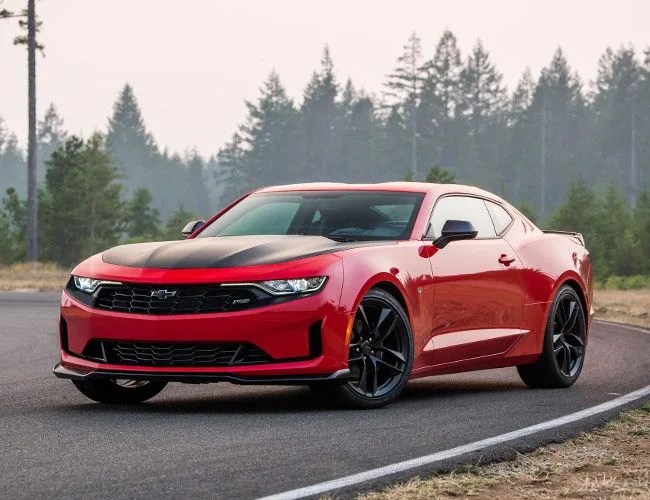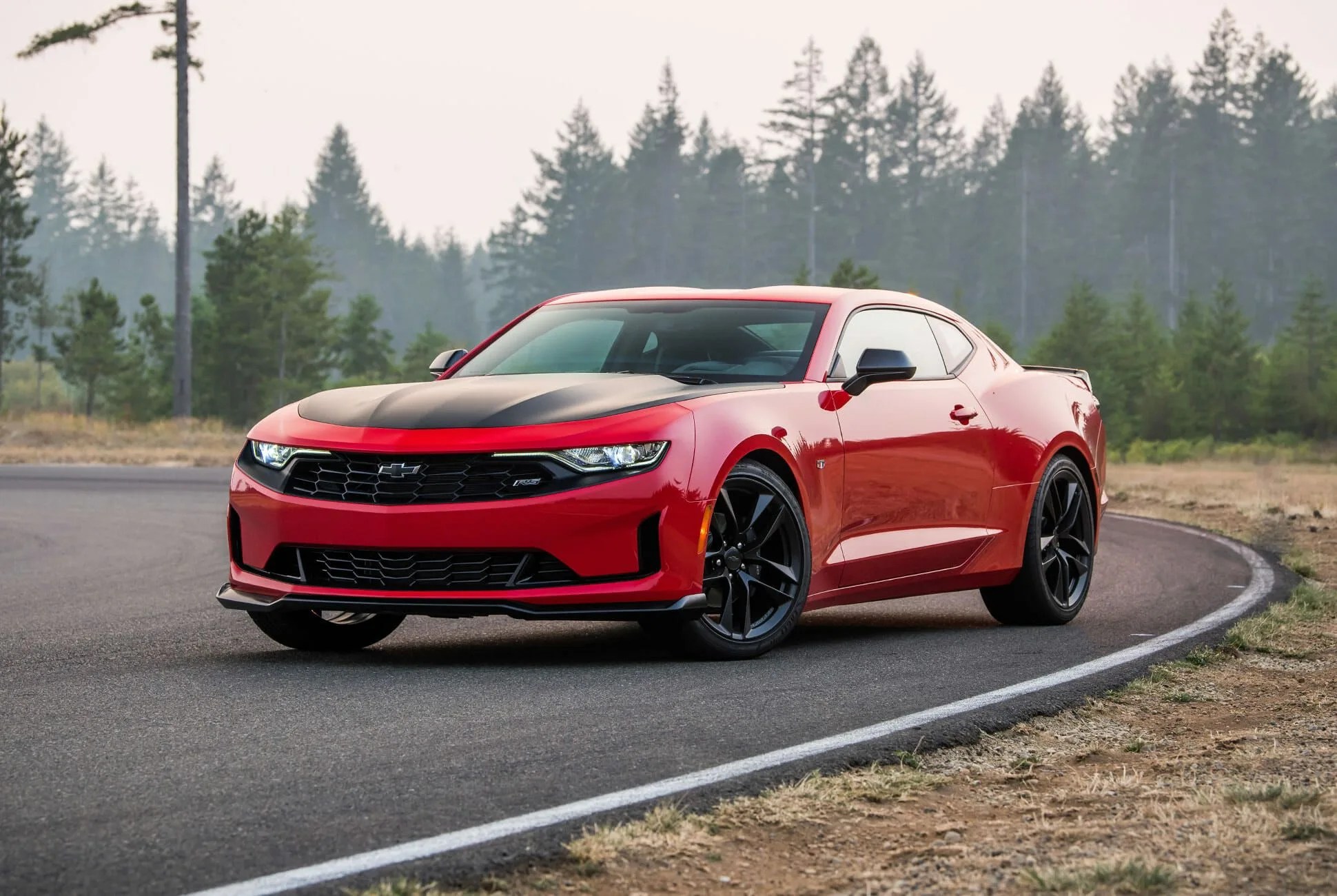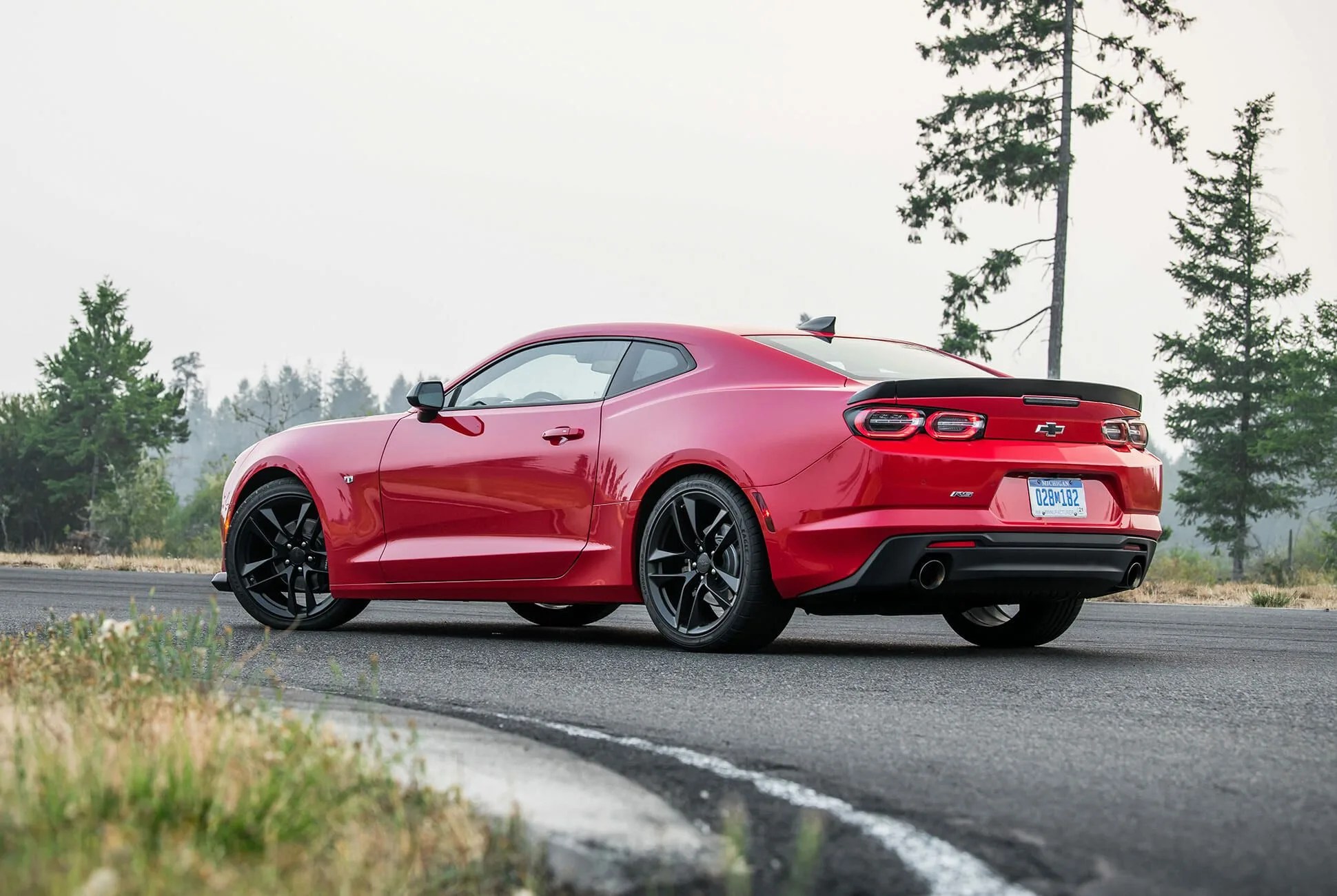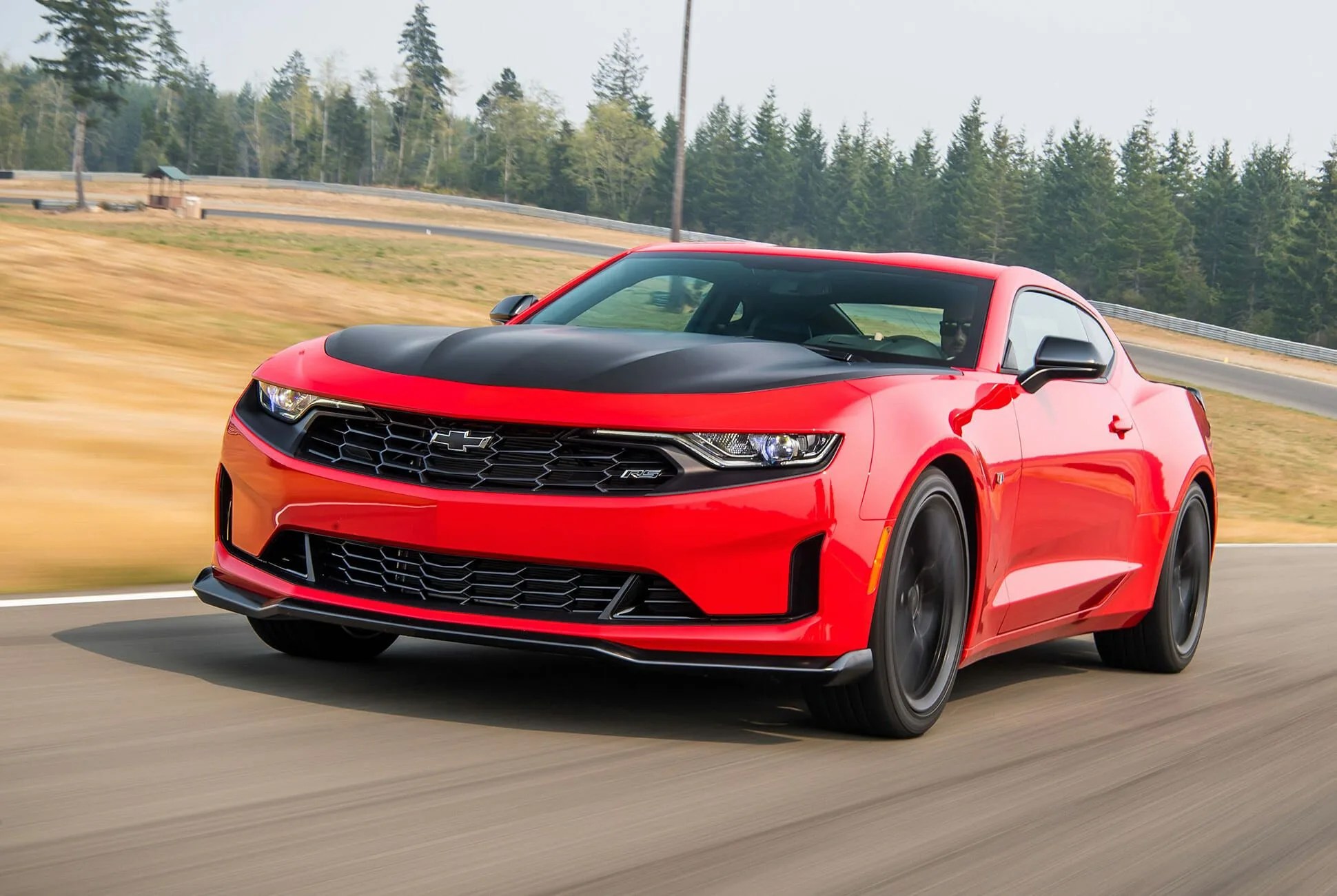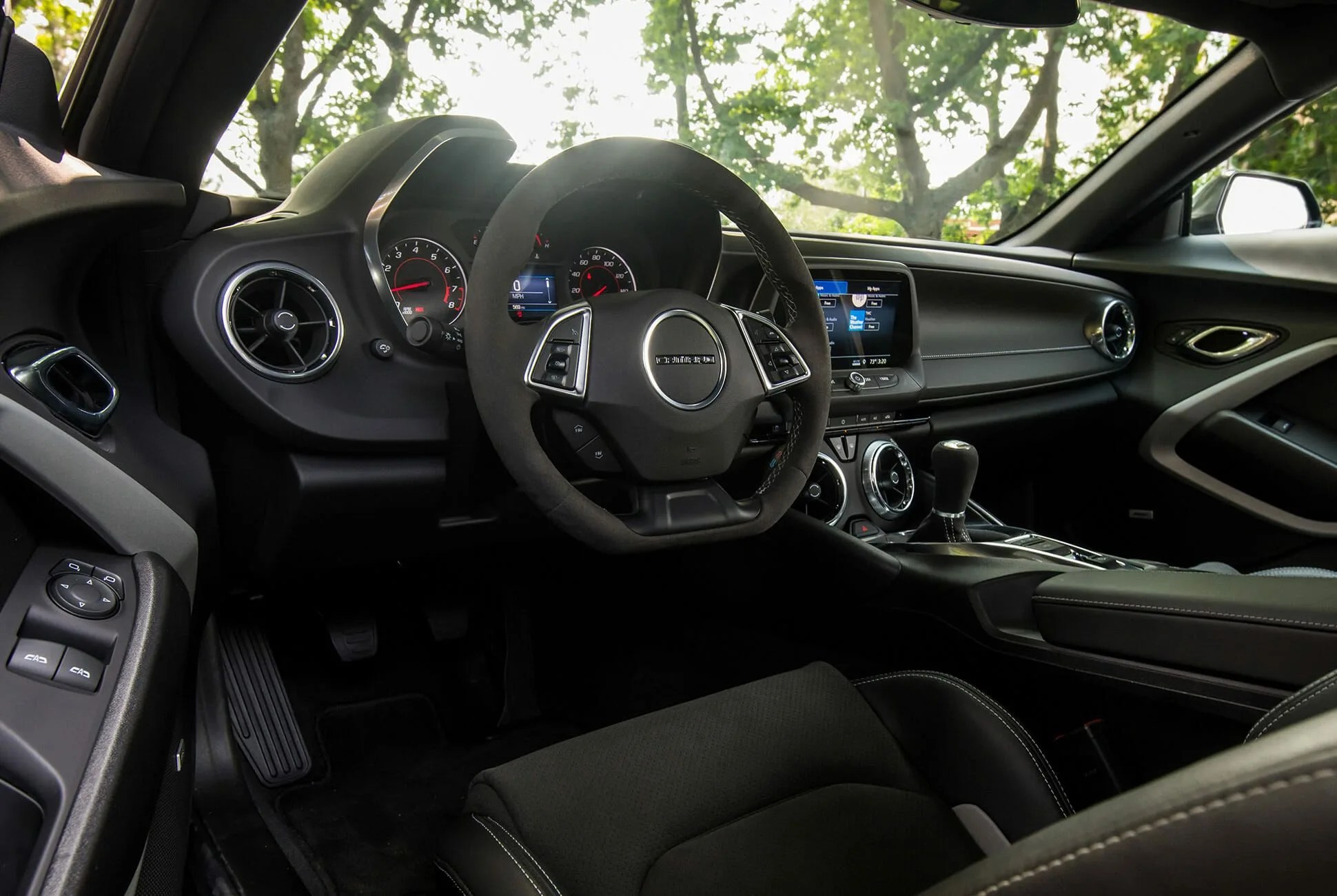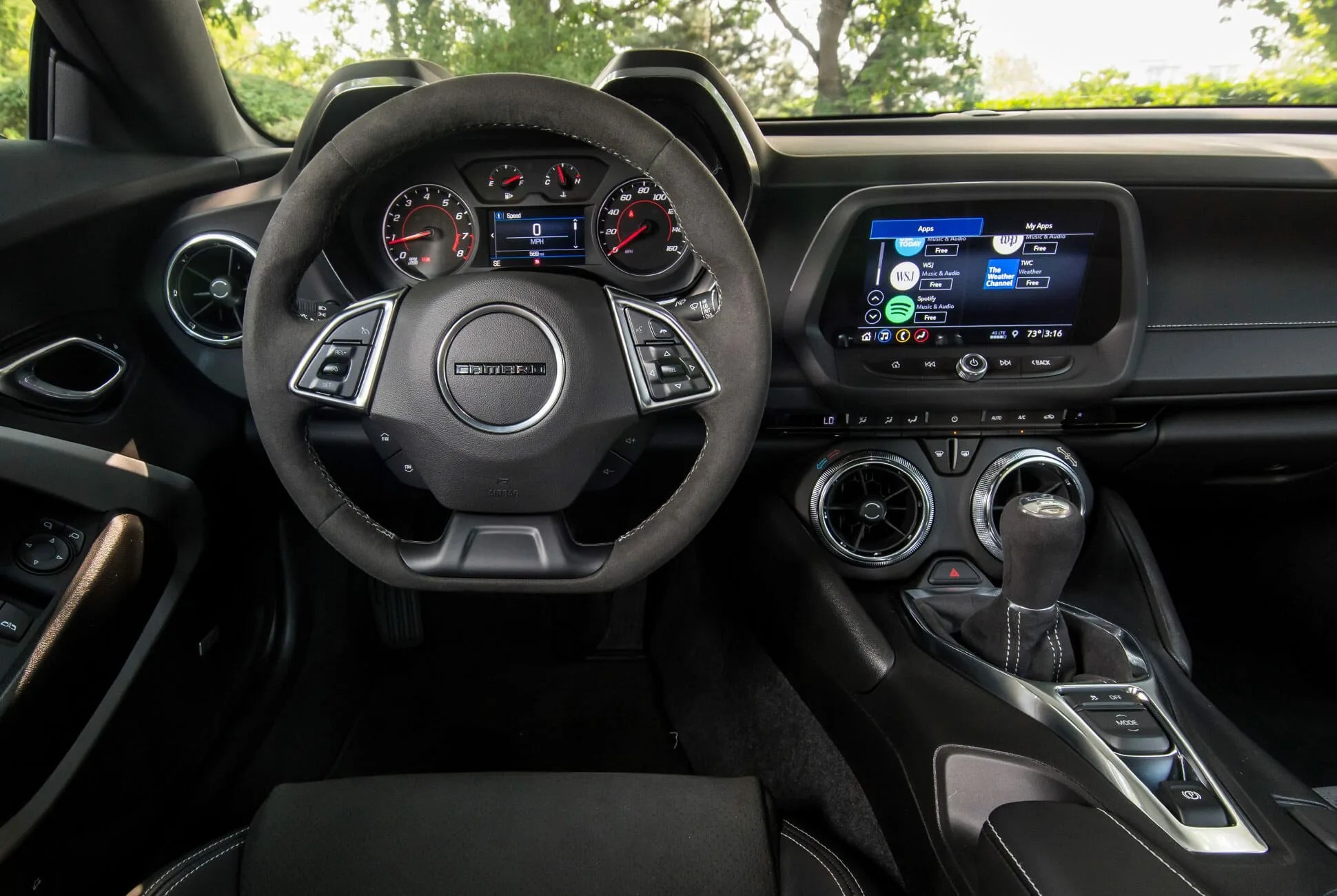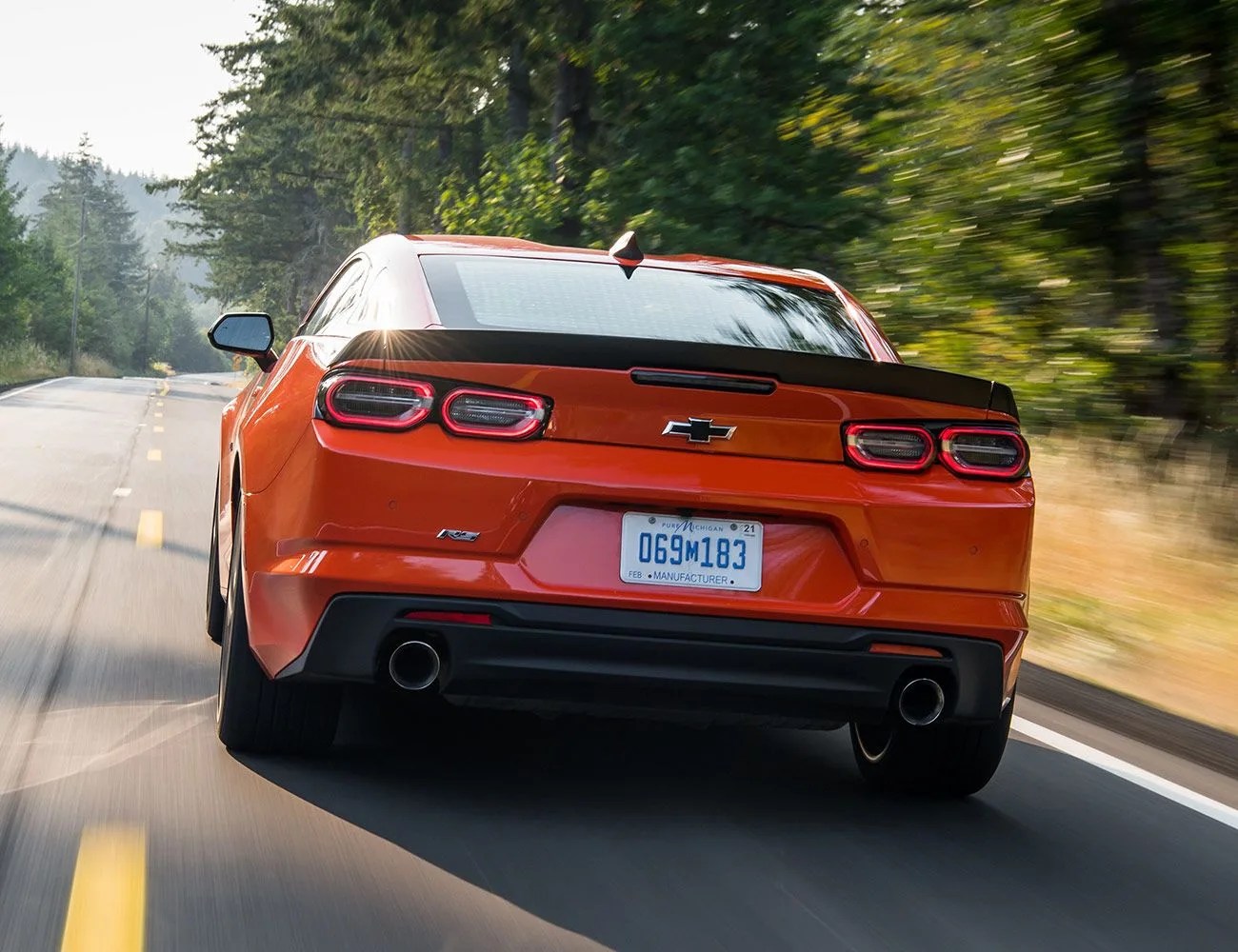Setting out on the road, the sixth-gen Camaro foibles pronounce themselves. Space is precious in the cockpit, so packaging choices stick out like a sore thumb, good or bad. For instance, the armrest can barely fit a combination of a phone, its charging cable, and a pack of gum. Any door pockets are equally inconvenient and backseat space should only be used for cargo or to punish enemies. The same premium for space is applied to visibility. Between the high belt-line of the doors and the narrow rear windshield, the rear quarter blind spots are huge, leaving you to rely on the low-profile mirrors. Most of the car’s quirks are small enough to overlook on an individual basis, but they become hard to ignore as they add up. The interior of the Camaro isn’t a horrible place to spend your time, there are just more comfortable interiors in equally sporty cars.
Most of these issues become moot once the 1LE is put to the test on the track. The drive up to Washington’s Ridge Motorsport Park was nominal, save for the quibbles previously mentioned and the Goodyear Eagle F1 tires, which are eager to track with the grooves along the highway. At the course, the Turbo 1LE was able to put all that balance to good use. A new “track” setting in the drive select firms up the steering, loosens traction control restrictions and opens up the exhaust. My tester, set up with the 2LT trim, was equipped with a head-up display and PDR (personal data recorder) to record my laps with an overlay of telemetry. These two things were the icing on an already track-day prepped cake as the PDR recorded my experience to share afterward and the head-up display made eyeing my revs easier, which I had to do a lot.
275 hp is a modest amount of grunt, and though “right-sized” for things like autocross events or technical tracks such as RMP, a couple of instances left me wishing I had more. Specifically, instances where momentum was lost, either due to a hairpin or me not getting a section of the track just right. There was too little “maintenance throttle” to apply and smooth out my error. Other times, though, I was flat out, wishing I had more power as I watched the digital tachometer projected onto the windshield slowly climb. Shift point indicator lights come on very early, far from the redline, but at peak power. There’s still a ways to go, but engine output starts to drop off. Regardless, I found myself often languishing in this range, staying in gear because I’d be at a brake zone too soon to justify an upshift. In between those moments, the balance Chevy has managed to craft into the Camaro does a splendid job. There were no points where the Turbo 1LE didn’t do what was asked of it, and any errors were purely driver-based, not due to any fault of the car. Braking was sharper and deeper than expected, which was a pleasant surprise, and watching my laps recorded by the PDR, I saw that I could’ve braked harder still in some cases.
Speaking of brakes, if anything breaks with the Turbo 1LE on the track, you’re covered. Yep, all track-oriented Camaros – including this one – don’t void their warranty with track use, provided they stay unmodified. Maybe that’s the deal-breaker for some, but for the rest, that’s peace of mind. Trust me, Chevrolet is all too happy for your Camaro to be seen at as many autocross events you can take it to. Just don’t hit anything.
Verdict: The sixth generation Camaro has been a hit in each iteration that’s been churned out, and adding the 1LE performance package continues the streak, giving its low-end option purpose outside of being a cost-saving measure. It’s a solid choice for green drivers eager to learn performance basics on a rear-wheel-drive coupe with an agreeable price, a manual gearbox and a wallet-pleasing warranty. Others looking for a track-or-autocross toy to whip around without the desire to fiddle under the hood will find the 1LE a decent out-of-the-box option as well.
Key Specs: 2019 Chevrolet Camaro Turbo 1LE
